Punctuation Study Guide
Punctuation marks are symbols used in writing to clarify meaning and indicate pauses, stops, or other grammatical structures. They are essential for conveying the intended message clearly and effectively.
Common Punctuation Marks
Here are some common punctuation marks:
- Period (.)
- Comma (,)
- Question mark (?)
- Exclamation point (!)
- Colon (:)
- Semicolon (;)
- Apostrophe (')
- Quotation marks (" " or ' ')
- Parentheses ( )
- Brackets [ ]
- Ellipsis (...)
- Dash (-)
Usage of Punctuation Marks
Each punctuation mark serves a specific purpose. Here's a brief overview of their usage:
- Period (.): Used to end a sentence or an abbreviation.
- Comma (,): Indicates a pause, separates items in a list, and separates clauses within a sentence.
- Question mark (?): Used at the end of a direct question.
- Exclamation point (!): Conveys strong emotion or emphasis.
- Colon (:): Introduces a list or elaborates on a preceding clause.
- Semicolon (;): Joins two closely related independent clauses.
- Apostrophe ('): Indicates possession or contraction.
- Quotation marks (" " or ' '): Encloses direct speech or quoted material.
- Parentheses ( ): Encloses additional information within a sentence.
- Brackets [ ]: Used to insert explanatory or added information within quoted material.
- Ellipsis (...) : Indicates omission or a trailing off of thought.
- Dash (-): Used to indicate a sudden break or change in thought.
Study Tips for Punctuation
To master the art of using punctuation effectively, consider the following tips:
- Practice using different punctuation marks in sentences to understand their impact on the overall meaning and tone.
- Review grammar and punctuation rules to ensure proper usage in various contexts.
- Read extensively to observe how punctuation is used by proficient writers.
- Utilize online resources and quizzes to test your punctuation skills and improve accuracy.
- Proofread your writing to identify and correct punctuation errors.
By understanding the role of each punctuation mark and practicing their usage, you can enhance the clarity and coherence of your writing.
[Punctuation] Related Worksheets and Study Guides:
.◂English Language Arts Worksheets and Study Guides Eighth Grade. Punctuation
Study Guide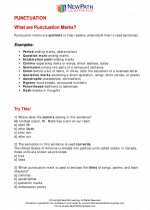 Punctuation
Punctuation  Activity Lesson
Activity Lesson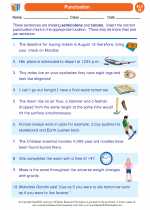 Punctuation
Punctuation  Worksheet/Answer key
Worksheet/Answer key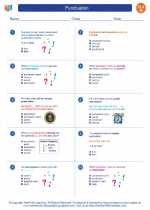 Punctuation
Punctuation  Worksheet/Answer key
Worksheet/Answer key Punctuation
Punctuation  Worksheet/Answer key
Worksheet/Answer key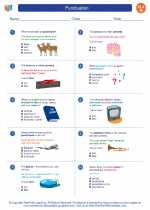 Punctuation
Punctuation  Worksheet/Answer key
Worksheet/Answer key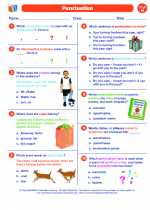 Punctuation
Punctuation 

 Activity Lesson
Activity Lesson
 Worksheet/Answer key
Worksheet/Answer key
 Worksheet/Answer key
Worksheet/Answer key
 Worksheet/Answer key
Worksheet/Answer key
 Worksheet/Answer key
Worksheet/Answer key

The resources above cover the following skills:
Students apply knowledge of language structure, language conventions (e.g., spelling and punctuation), media techniques, figurative language, and genre to create, critique, and discuss print and nonprint texts. (NCTE)